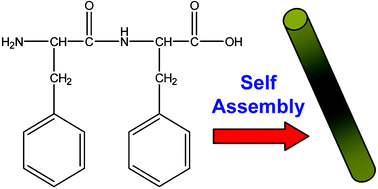Self-assembled peptide nanostructures: the design of molecular building blocks and their technological utilization
Abstract
In this tutorial review the process and applications of peptide self-assembly into nanotubes, nanospheres, nanofibrils, nanotapes, and other ordered structures at the nano-scale are discussed. The formation of well-ordered nanostructures by a process of self-association represents the essence of modern nanotechnology. Such self-assembled structures can be formed by a variety of building blocks, both organic and inorganic. Of the organic building blocks, peptides are among the most useful ones. Peptides possess the biocompatibility and chemical diversity that are found in proteins, yet they are much more stable and robust and can be readily synthesized on a large scale. Short peptides can spontaneously associate to form nanotubes, nanospheres, nanofibrils, nanotapes, and other ordered structures at the nano-scale. Peptides can also form macroscopic assemblies such as hydrogels with nano-scale order. The application of peptide building blocks in biosensors, tissue engineering, and the development of antibacterial agents has already been demonstrated.


 Please wait while we load your content...
Please wait while we load your content...